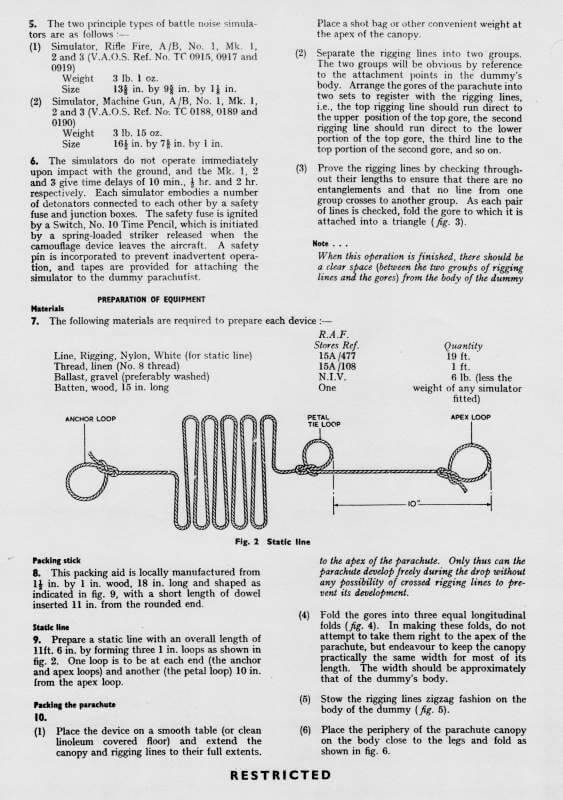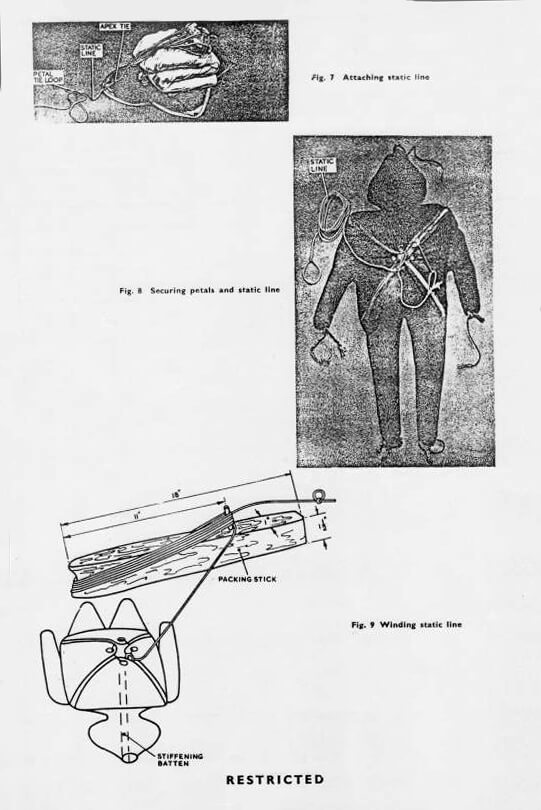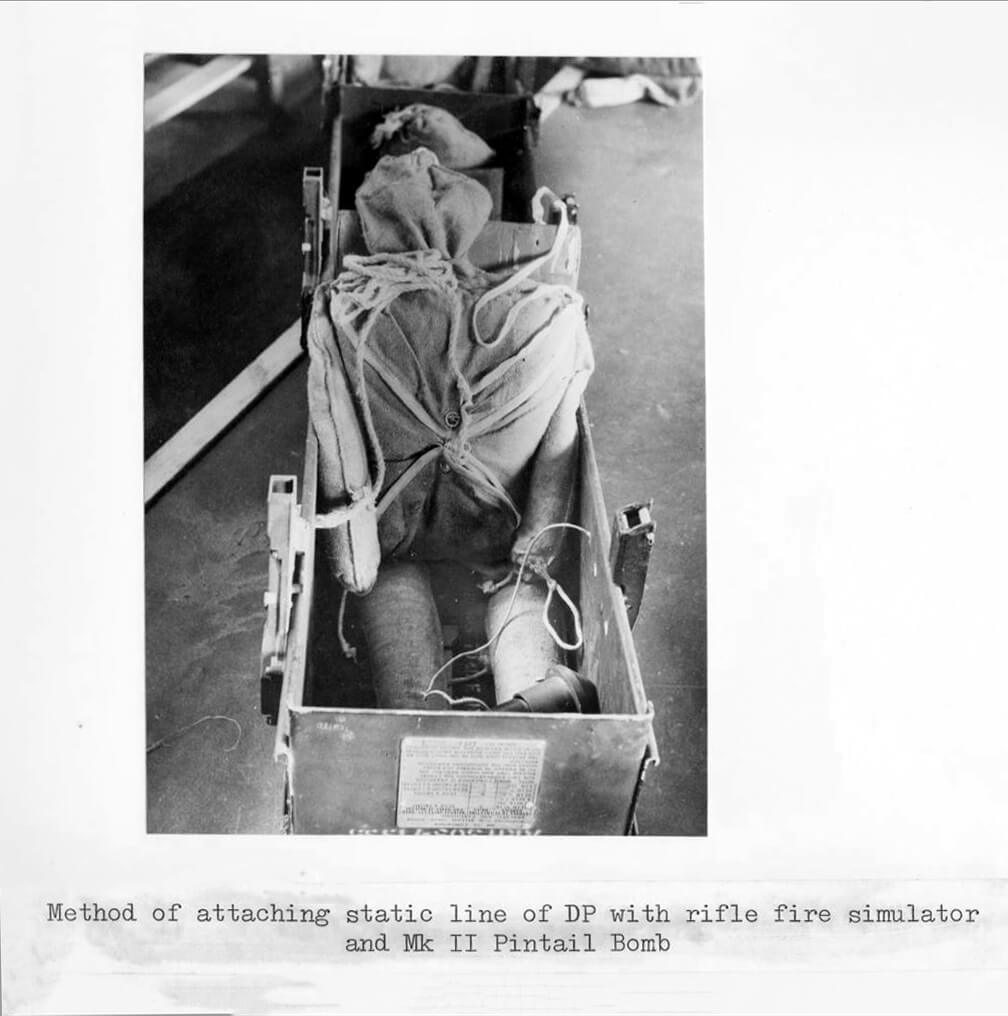| Length |
| 90 centimetres |
| Wide |
| 30 centimetres |
| Weight |
| Depends on load |
| Propulsion |
| – |
| Armour |
| – |
| Armament |
| – |
| History |

The Paratrooper-dummies, nicknamed “Rupperts,” were decoys to simulate paratroopers. These dummies were approximately 90 Centimetres tall and constructed from sackcloth, filled with sand and straw. Each dummy was equipped with an integral parachute to mimic the appearance of descending paratroopers. At a distance, they could easily be mistaken for actual paratroops.
The official designation for these dummies was “Device, Camouflage, No. 15.” Various forms of Ruperts existed, each with unique features to enhance their deception capabilities:
- Self-Destruct Devices: Some Ruperts included a timed self-destruct mechanism that would burn the dummy and its parachute. This was intended to give German troops the impression that real paratroopers had landed, burned their chutes, and either lay in wait or had dispersed to carry out sabotage operations in the area.
- Simulated Small Arms Fire: Other versions of Ruperts were equipped with charges that could simulate the sound of small arms fire, adding to the illusion of an actual paratroop landing.
- Simulated Explosions: There were also Ruperts equipped with larger charges that could replicate the explosions of grenades or mortar shells, further enhancing the deception and confusion among enemy forces.
These innovative tactics played a crucial role in misleading the enemy and achieving strategic advantages during operations.
In the 1962 epic war film “The Longest Day,” the use of Rupert dummies plays a significant role in depicting the elaborate deceptions employed during Operation Overlord. Directed by Ken Annakin, Andrew Marton, and Bernhard Wicki, the film sought to provide a realistic portrayal of the events leading up to and including the Normandy landings on June 6, 1944.
Interestingly, producer Darryl F. Zanuck chose to use more human-like rubber dummies resembling U.S. paratroopers for the film, rather than the actual sackcloth parachutist-dummies used during the war. These rubber dummies, activated by moving an arm down, added a humorous touch to the production. This choice was rather odd, given that the British Special Air Service (SAS) during Operation Titanic, is using dummies resembling U.S. paratroopers instead of British paratroopers.
Operation Titanic was a critical component of the Allies’ deception strategy to mislead German forces about the true landing zones. The British SAS dropped the sackcloth Ruperts, which were approximately three feet tall and filled with sand and straw, equipped with small parachutes to mimic the appearance of descending soldiers. In contrast, “The Longest Day” depicted rubber dummies that looked like U.S. paratroopers, creating a different visual impact.
The film focuses on the fire-simulating dummies, which were equipped with timed self-destruct devices. These devices would ignite, burning the dummy and its parachute, simulating the actions of real paratroopers who might destroy their chutes to avoid detection. The visual effect of these burning dummies further enhanced the deception, giving the impression of a larger, more dispersed airborne invasion.
“The Longest Day” successfully illustrates how these fire-simulating dummies contributed to the overall success of the D-Day landings by misleading German forces and spreading their defenses thin. Despite the anachronistic use of rubber dummies resembling U.S. paratroopers by the British, the film’s attention to historical detail serves as a testament to the creativity and resourcefulness of the Allied planners who orchestrated one of the most significant military operations in history.
| Multimedia |
















| Manual |








| Documentation |











| Deployment |





